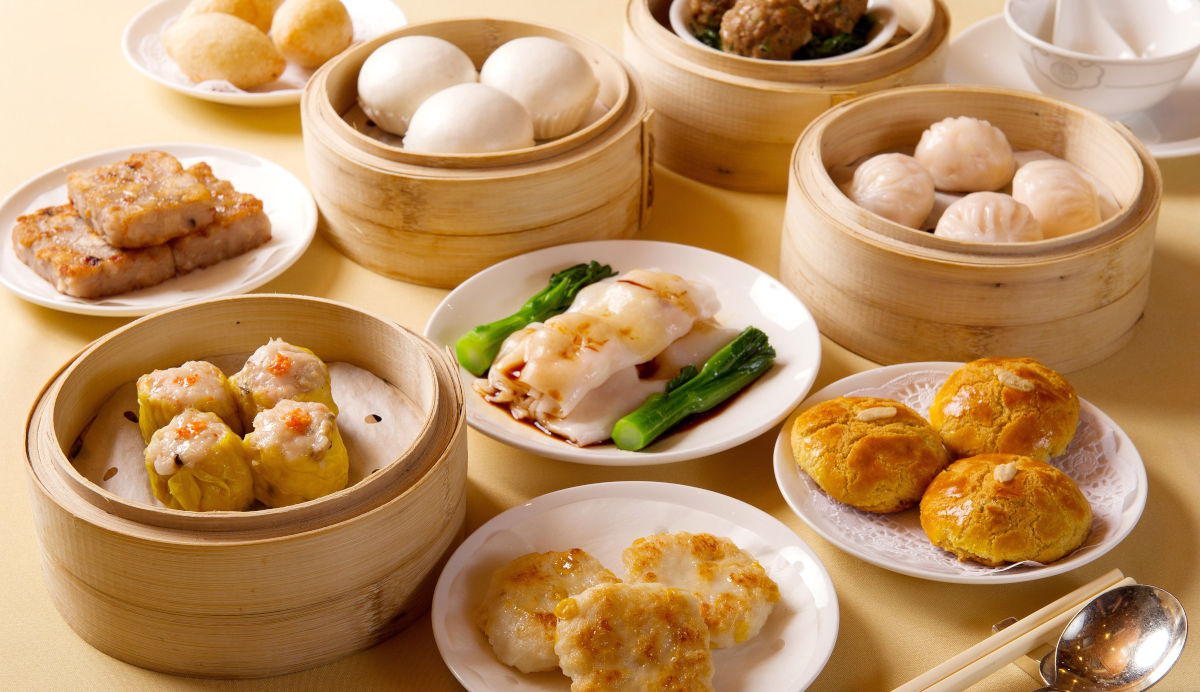Yum cha, literally meaning “drink tea”, comes from the traditional Chinese enjoyment of tea with dim sum, which are small, usually steamed dishes. Dim sum is popular in Hong Kong, Macau, Guangdong province, and the Chinese community at large. Yum cha originated in Guangzhou as a way for travellers to enjoy a quick meal of two or so dishes with tea. Here are some great dim sum dishes you must order at a cha lau, or tea house, in Hong Kong.
Shrimp dumplings (蝦餃)
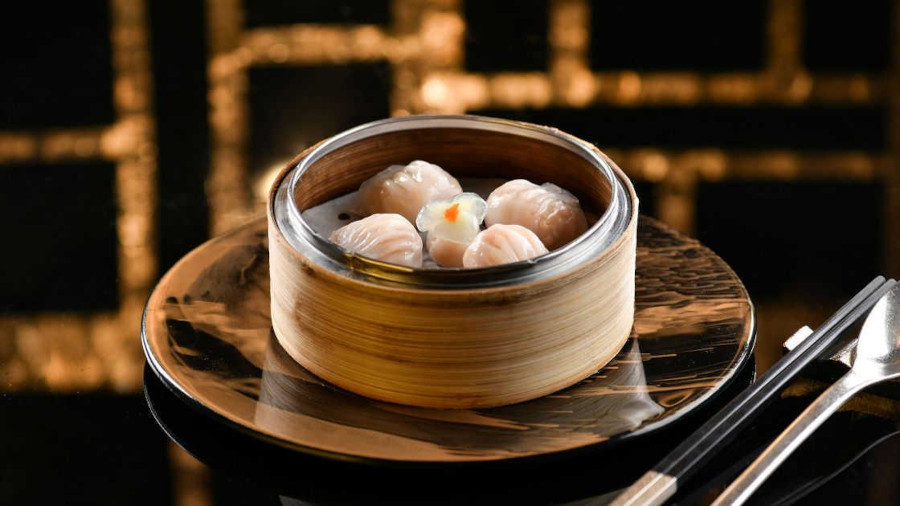
Shrimp dumplings translates to har gow in Cantonese. The fillings are made with fresh shrimp and minced pork with seasoning. The fillings are wrapped in semi-transparent wrappers made of wheat and potato starch. It is best served immediately to keep the freshness and juiciness of the shrimp; when you bite into the skin, there should be a burst of flavour.
Chicken feet (鳳爪)
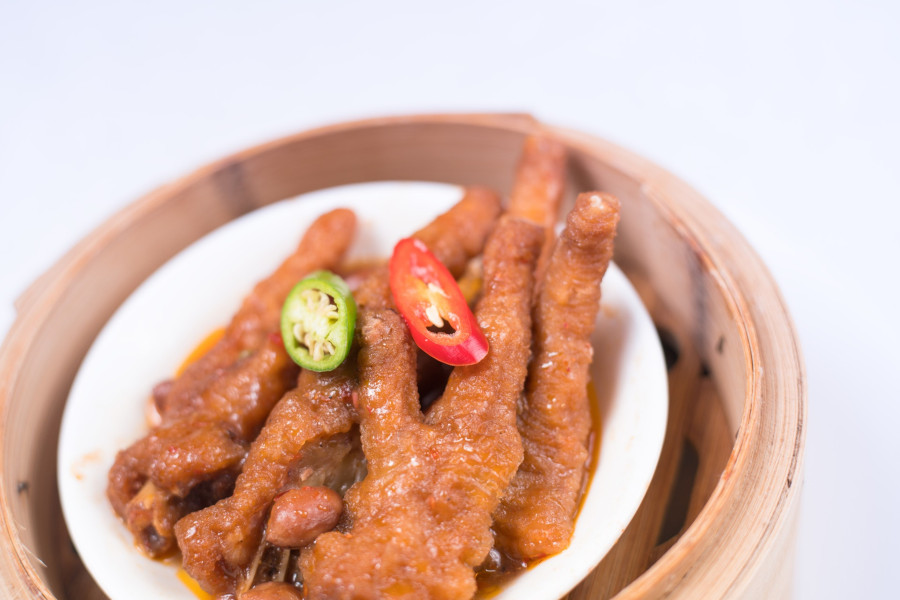
Chicken feet, pronounced fung jao in Cantonese, is a popular dish that contains collagen for healthy skin. The feet are carefully cleaned, fried in hot oil, then marinated with mixtures of sauces and pepper. The dish is then steamed on a dish in a bamboo steamer to keep the meat stewing in its juices. The resulting dish is chewy, juicy, and rich in flavour all the way to the bones having soaked in the brine.
BBQ pork buns (叉燒包)

Char siu bao is a barbecue pork bun that originated in Hong Kong. The steamed bun is made with white flour, sugar, baking powder, and filled with char siu that has the right balance of fat and lean meat. The perfect char siu bao has a cross on top that has opened slightly as it cooked, with light, fluffy bread, and aromatic char siu. Typically two to four are served in an order, either steamed or baked.
Siu mai (燒賣)
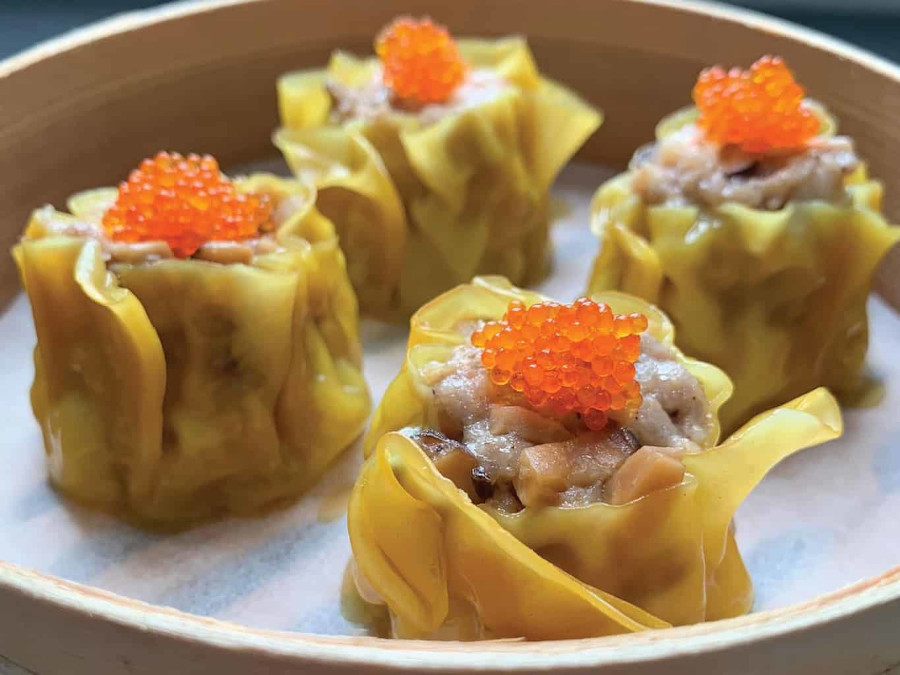
Siu mai is a wrapped meat dumpling that originated in Hohhot, Mongolia. Traditional siu mai uses a yellow coloured wrapper, but there are lighter-coloured versions too and both are delicious. Warm water and flour are made into the dough that forms the dumpling skin. Common fillings are pork, beef, or fish, and some versions are topped with quail eggs or crab roe for a pop of colour and bright flavour, which contrast the deep umami flavours of the meat.
Radish or turnip cake (蘿蔔糕)

Known in English as turnip or radish cake, lo bak gou actually translates to “white carrot cake” in Cantonese. It is made with shredded turnips, which are combined with rice flour and lap cheung (preserved pork sausage) or ham to form the cake. Steamed lo bak gou is soft and moist, while the pan-seared version is a bit firmer and satisfyingly brown on the sides. The contrast in the pan-fried version between the crispy outer layer and the elastic inner layer is a delight.
Sticky rice dumpling (糯米雞)
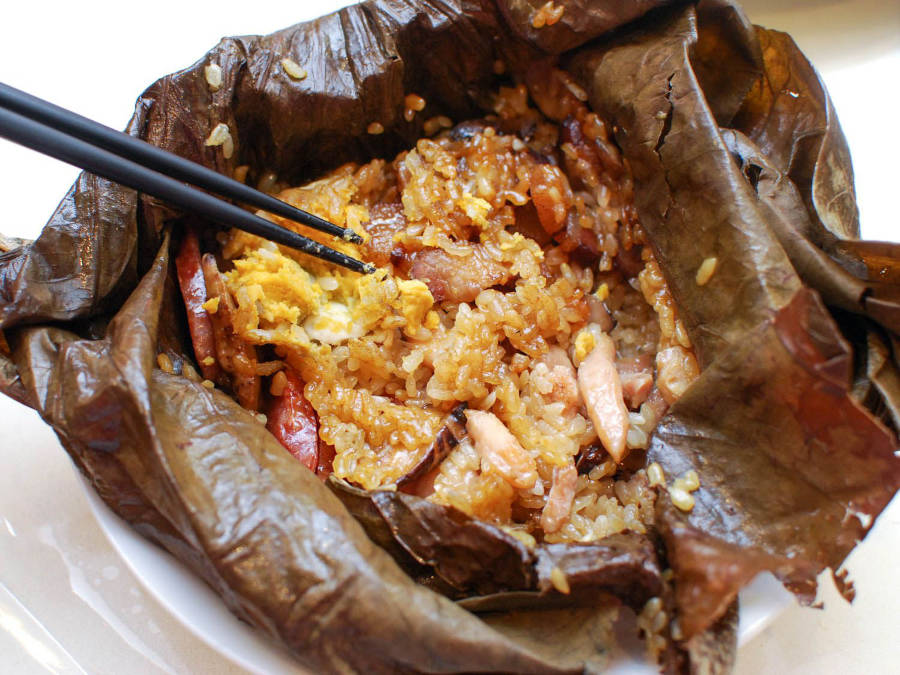
This sticky rice dumpling, called lo mai gai in Cantonese, is a dish of chicken and sticky glutinous rice wrapped in a lotus leaf. The steamed glutinous rice is combined with mushrooms, dried scallop, and lap cheung. The resulting dumpling has a moist, meshy, sticky texture with a hint of saltiness and umami.
Fried taro dumpling (芋角)
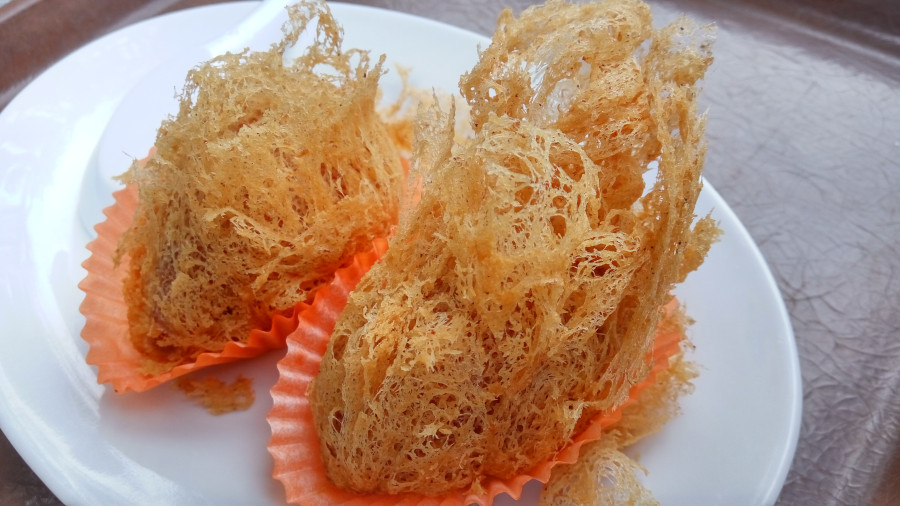
Fried taro dumpling, called wu gok, is an artistic dim sum pastry with a unique honeycomb look. It is prepared by first cooking the taro until it’s soft, then mixing it with flour to form meshy taro balls. The balls are filled with sauteed ground pork, seasoning, and vegetables, and then deep-fried. Wu gok is airy, light, and crispy outside, and soft with a salty-sweet flavour inside.
Pork ribs (排骨)
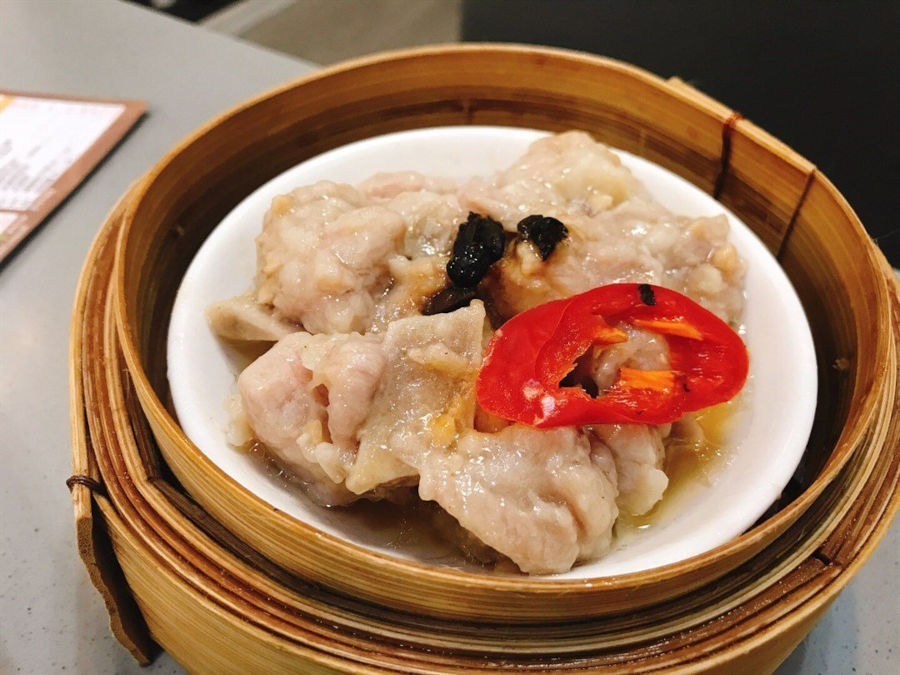
Steamed pork ribs are called pai gwut in Cantonese. Mini rib bites are cooked together with fermented black beans, soy sauce, and sugar, and garnished with green or red pepper. The simple dish is smooth, tender, and highlights the quality of the chicken. Some people like to add vinegar on top to remove any gamey smell.
Beef balls (牛肉球)
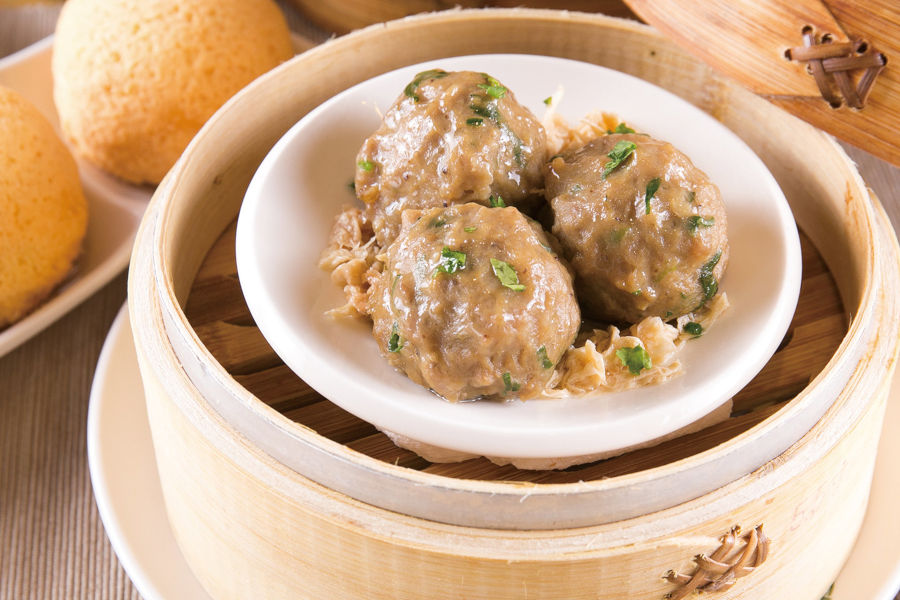
Beef balls, called ngau yuk kau in Cantonese, is a dish of steamed meatballs that is made with minced ground beef, coriander, bean curd, and baking powder. The balls are further seasoned with orange peel, soy sauce, sesame oil, water chestnut, and pepper. It requires effort to make the beef tender by hand, so that they hold their shape. When made well, the meatballs have a consistent smooth texture throughout with the occasional crunch of water chestnut.
Stuffed eggplant (煎釀茄子)
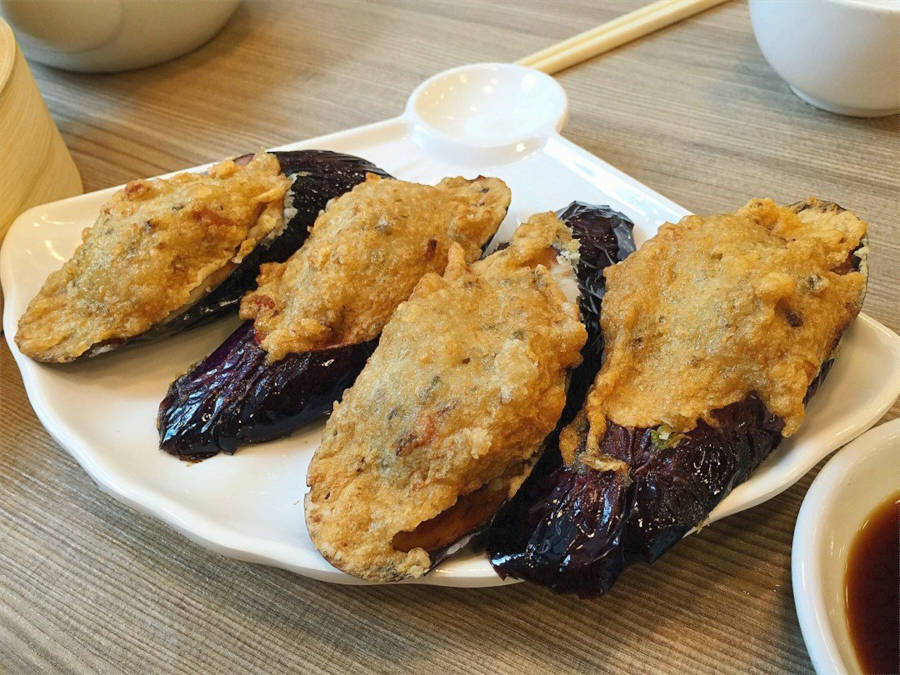
Stuffed eggplant, called jin yeung ke ji, has two layers of flavours, the minced dace fish meat topping and eggplant base. Fish meat is seasoned with salt and pepper, then the eggplants are sliced and pan-fried. To assemble, the eggplants are brushed with a cornstarch and water mixture to make sure the filling sticks, as it’s not actually put inside the eggplant. After steaming, it is served with soy sauce, oyster sauce, sugar, and scallion oil. The meaty taste of eggplant with the juicy fish make this a great, fibrous dish.
Rice noodle rolls (腸粉)

Cheung fun is a dish of glistening rice noodle rolls served on an oval plate. Cheung fun is made by combining rice flour, starch, and sticky rice flour. The noodles are steamed to form a thin rice layer and then rolled. It can be served plain just like this with some soy sauce poured with a light hand, or with fillings such as shrimp, char siu (barbecue pork), beef, or fried Chinese donut. This dish is smooth and chewy.
Sponge cake (馬拉糕)
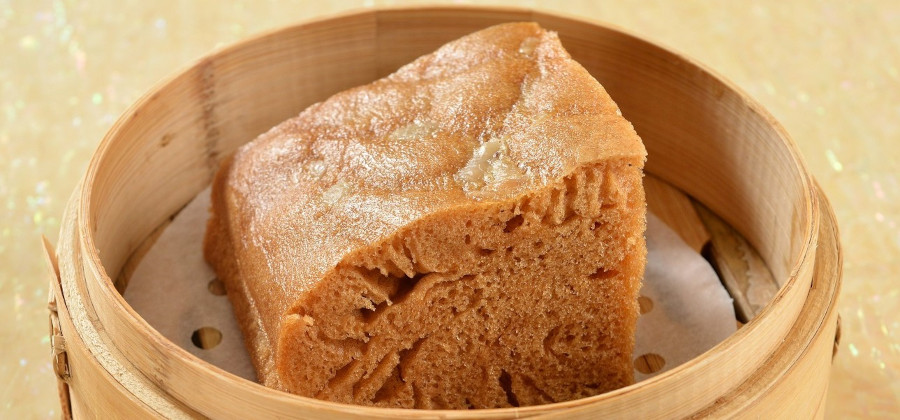
Ma lai gou is a steamed sponge cake in Cantonese. The speciality of ma lai gou is the top layers of trapped air bubbles that make for a light cake. The traditional cake is made with flour, egg, lard, and butter. This mixture is fermented for 24 hours to allow air pockets to form, then steamed. The dish, often served at the end of the meal, is aromatic, spongy, moist, and fluffy. There is a brown sugar version that is a tad sweeter. There are many light dessert dishes commonly eaten at the end of yum cha, and this is just one of them.
The tradition of yum cha continues to thrive in Hong Kong and around the world today and is best to try during the morning and afternoon, when the dishes have been freshly made. Look for restaurants close by to enjoy yummy dim sum!
Header image credits: Fook Lam Moon via CNN Travel


